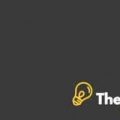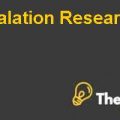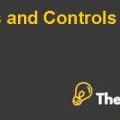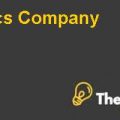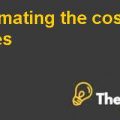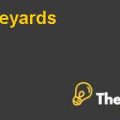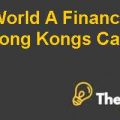Blaine Kitchenware
- As the current financial policy of the organization is analyzed, it is found out that the organization is very conservative in its financial policy due to which it has made use of debt only two times during its life. As the time passed by, the organization became very concerned with changing its policies in order to obtain the benefit of debt.
According to Pecking order theory, the organization should be financed from the following sources of funds:
- First from retained earnings, as it is free of cost.
- Secondly from the use of debt, as its issue cost is low and also the tax relief provided on its interest payment could generate huge cost savings.
- Finally from the use of equity because it is expensive in terms of issue cost and the return demanded by the shareholders based on both the business and financial risk.
The current capital structure of the organization does not seem to be optimal, as it fails to realize the benefit of cost savings generated from the use of debt.
According to Miller-Modigliani theorem, the usage of debt could lower the total cost of capital due to tax relief available on the interest payment on loan. Similarly, it is also strongly suggested that the use of debt should be made as much as possible, because it lowers the total cost of capital however; the over leverage capital structure could lead to the following drawbacks:
- It could lead to liquidation of the organization, if there is non-payment of interest and principal amount.
- It allows the lender to foreclose the organizational assets if there is no possibility of payment.
- It also imposes some restriction on the activities of the organization in the form of covenants.
- It also requires commitment in the form of regular payments of interest due to which it limited the profitability return and the cash flow for other activities such as capital investment and dividend payment.
Despite the analysis above, there is not a single theory, which specifies what type of capital structure could be optimal, so it’s not relatively easy to predict the optimal structure as it depends on the context within which the organization exist.
- Share repurchase program would involve a situation where the original owners of the organization would buy back the shares previously sold.
The advantages and disadvantages of the program are as follows:
| Advantages | Disadvantages |
| It would increase the share price of the company due to increase in demand and less supply. | It could provide cover for stock handouts. |
| This would increase the ownership of family, which means they had more influence and control over the organization. | This would decrease the cash flow which in other words could affect the liquidity of the company along with its ability to make capital investments. |
| In order to value the company properly, the earnings per share is used frequently, therefore in order to bring a boost in the valuation, the buyback would augment the earnings per share figure. | It could even decrease the amount of dividend payment for the upcoming periods. |
| This program shows that the company was highly liquid, due to which it can easily afford such expensive program. | This would create problems for minority shareholders. |
| It would allow the owners to create their own dividend policy. | It could support the management self-interest as they might be supporting this program with an aim to capitalize on their stock option whenever the share price rises for a short term. |
| This program brings confidence in shareholder. | Less cash flow means there would be a need to borrow money in order to finance growth programs and day to day operations. |
- The effect of the repurchase program on the following financial ratios and ownership was as follows:
- The Ownership of the family would increase from 62% to 69%.
- The earning per share would decrease from 0.91 to 0.57.
- The return on equity would decrease from 11% to 6%.
- The WACC would decrease from 6.73% to 6.69% due to tax benefit.
- As a member of the family, I would be willing to approve this transaction as it would lucrative for the family in number of ways:
- It would increase the ownership and allow us to improve our representation of views on the board.
- It would allow the family to develop the dividend policy in their favor.
- It would show that the organization has enough cash flow, which in turn would give a positive signal to the stock market.
- From the viewpoint of minority shareholders, this transaction would be unfavorable for them in the following ways:
- First it would increase the ownership of majority shareholders, which means their views would be given priority while the minority would continue to suffer the symptom of non-representation on the board.
- Secondly, it might also lead to less favorable policies, which might affect the minority interest for example, no dividend payment etc.
- Finally, it would decrease their influence on the board, which means they would not be able to have any say in how the organization should be managed.

